Massachusett’s Department of Conservation and Recreation (DCR) manages much of the available public land and green space in Cambridge. CP&GC partners with DCR to leverage long-term restoration improvements and works closely with the City and DCR to support these open spaces.
Lowell Memorial Park
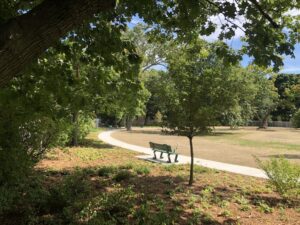
Even in the early 1900s, members advocated for the creation of a park on grounds that once belonged to the longtime home of notable poet and Cantabrigian James Russell Lowell. Again in 2012, members contacted DCR in hopes of planting a Linden tree at the park.
Overdue for restoration, especially the historic brick walls, DCR commissioned a report identifying preservation priorities; CP&GC applied for a Cambridge Community Preservation Act grant and DCR’s Partnership Matching grant program for funding. Encouraged by CP&GC’s interest, funding was allocated and a multi-part public process has culminated in the 2024 renovation of the historic park.
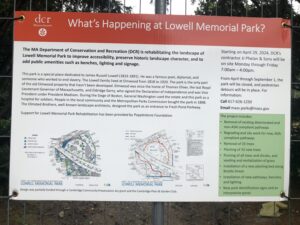
Hell’s Half Acre and Greenough Boulevard
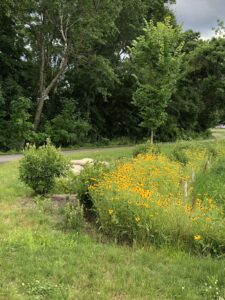 The last remaining piece of marsh in the Charles River Basin, Hell’s Half Acre is now 7-1/2 acres of urban wildland owned by the DCR. CP&GC’s interest in this unique site dates to the 1950s when the Plant Club opposed the building of a highway through this rare urban wilderness. Comprised of four distinct habitat types: wetland, woodland, riparian, and road’s edge; the wetland and woodland areas are losing the battle against many unwanted invasive plants including the tenaciously invasive phragmites. CP&GC commissioned the New England Wild Flower Society (now Native Plant Trust) to undertake a three-season botanical inventory of the site in 2017, one we hope will inform the City and the DCR as they move forward on reclamation plans.
The last remaining piece of marsh in the Charles River Basin, Hell’s Half Acre is now 7-1/2 acres of urban wildland owned by the DCR. CP&GC’s interest in this unique site dates to the 1950s when the Plant Club opposed the building of a highway through this rare urban wilderness. Comprised of four distinct habitat types: wetland, woodland, riparian, and road’s edge; the wetland and woodland areas are losing the battle against many unwanted invasive plants including the tenaciously invasive phragmites. CP&GC commissioned the New England Wild Flower Society (now Native Plant Trust) to undertake a three-season botanical inventory of the site in 2017, one we hope will inform the City and the DCR as they move forward on reclamation plans.
In the spring of 2020, a three-year ecological restoration project to remove choking invasive plants began. The $150,000+ project is being spearheaded by the Charles River Conservancy, with major support by the City of Cambridge and the DRC, along with small private donations.
Magazine Beach
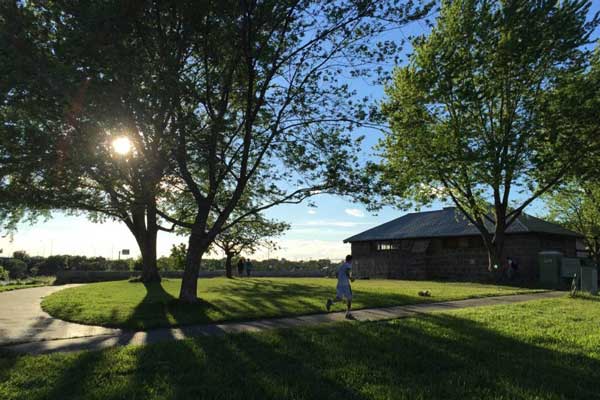 In 2016, CP&GC hosted an informational meeting about the developing restoration project at the city’s second largest park. On Memorial Drive and enjoyed by generations of Cantabrigians, the park has a robust group of supporters in Magazine Beach Partners. We are proud that Cathie Zusy, the organization’s president, is a CP&GC member. Since the original 2016 meeting, CP&GC has supported restoration efforts at the park in multiple ways, including digging and transplanting native perennials donated by Meadowscaping for Biodiversity in Waltham, and supplying a bicolor oak tree for inclusion in the revitalized Charles River shoreline. Photo courtesy Magazine Beach Partners
In 2016, CP&GC hosted an informational meeting about the developing restoration project at the city’s second largest park. On Memorial Drive and enjoyed by generations of Cantabrigians, the park has a robust group of supporters in Magazine Beach Partners. We are proud that Cathie Zusy, the organization’s president, is a CP&GC member. Since the original 2016 meeting, CP&GC has supported restoration efforts at the park in multiple ways, including digging and transplanting native perennials donated by Meadowscaping for Biodiversity in Waltham, and supplying a bicolor oak tree for inclusion in the revitalized Charles River shoreline. Photo courtesy Magazine Beach Partners
Memorial Drive London Plane Trees
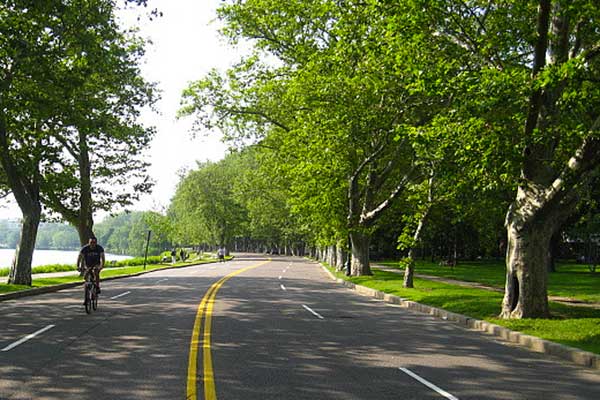 The London plane trees lining Memorial Drive on the Charles River have survived and prospered, defying difficult environmental conditions and remain one of the City’s most iconic symbols. Planting began in 1897.
The London plane trees lining Memorial Drive on the Charles River have survived and prospered, defying difficult environmental conditions and remain one of the City’s most iconic symbols. Planting began in 1897.
A highway interchange proposal to widen Memorial Drive, add underpasses, and cut down the London Plane trees was met immediate resistance after quickly catching the community’s attention. Following well-organized protest and national publicity, these plans were abandoned. Many original trees still exist with their broad canopy providing shade along sections of the Drive. Currently, DCR is considering options for “Phase III of the Memorial Drive Restoration” that could again threaten these magnificent trees. CP&GC is committed to advocating that any changes safeguard the current trees and commit to planting new ones.
Blair Pond
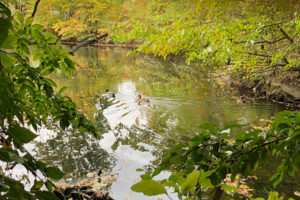 Blair Pond is a one-acre clay pit dug in the early 1990s by a brick manufacturer. Tucked in a seven-acre reservation it is now part of the DCR’s Alewife Reservation. CP&GC has partnered with the small but mighty Friends of Blair Pond neighborhood group and the DCR to secure a GCA Partners for Plants grant to develop a plant survey and planting plan for the site. Native Plant Trust has been contracted to do this work beginning this spring.
Blair Pond is a one-acre clay pit dug in the early 1990s by a brick manufacturer. Tucked in a seven-acre reservation it is now part of the DCR’s Alewife Reservation. CP&GC has partnered with the small but mighty Friends of Blair Pond neighborhood group and the DCR to secure a GCA Partners for Plants grant to develop a plant survey and planting plan for the site. Native Plant Trust has been contracted to do this work beginning this spring.
